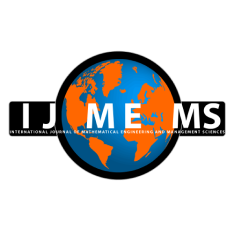Venkatesh Ambati
Computational Petroleum Geomechanics Laboratory, Department of Ocean Engineering, Indian Institute of Technology Madras, Chennai, India.
Nagendra Babu Mahadasu
Computational Petroleum Geomechanics Laboratory, Department of Ocean Engineering, Indian Institute of Technology Madras, Chennai, India.
Rajesh R. Nair
Computational Petroleum Geomechanics Laboratory, Department of Ocean Engineering, Indian Institute of Technology Madras, Chennai, India.
DOI https://doi.org/10.33889/IJMEMS.2021.6.4.060
Abstract
Seismic data provide evidence about hydrocarbon deposition, geological and geophysical subsurface information, including geomechanical aspects. Deriving and understanding geomechanical properties is crucial for reservoir management as it can avoid drilling and production-related problems that cause environmental impacts associated with land subsidence and uplift. The Poison's ratio (PR), Young Modulus (YM), and elastic moduli for a reservoir block were estimated using 3D seismic pre-stack data and well data. 3D Mechanical Earth Models (MEM) were also developed using the well logs, seismic horizons, and drilling data. Seismic data-derived geomechanical properties were compared with the mechanical earth models for the first time for this field. Well-tie analysis was used for inversion of 3D seismic data to extract detailed waveform and amplitude information. The brittleness index of the subsurface layers was estimated, which is a critical rock property that provides information about rock hardness and fragility phenomenon. The brittleness index has a diverse range from 5-35%, with significant contrast at shallow zones. PR and YM models generated from 3D MEM and seismic data have average values of 0.2 -0.6 and 5 - 28 GPa with significant contrast from shales and carbonates. The study recommends that the drilling through these problematic zones should be avoided to avoid wellbore problems that cause challenges in maintaining wellbore integrity and reservoir management in the North-Heera field, Mumbai Offshore Basin.
Keywords- Seismic inversion, Well-tie analysis, Geomechanical properties, Mechanical earth models, Reservoir management.
Citation
Ambati, V., Mahadasu, N. B., & Nair, R. R. (2021). Seismic Driven Geomechanical Modeling of Uplifted and Subsided Wells in Mumbai Offshore and Its Engineering Implications. International Journal of Mathematical, Engineering and Management Sciences, 6(4), 1025-1043. https://doi.org/10.33889/IJMEMS.2021.6.4.060.



